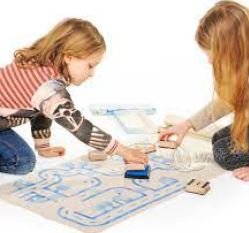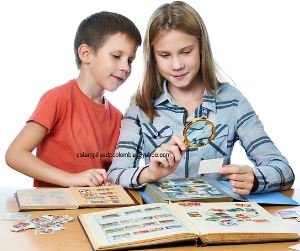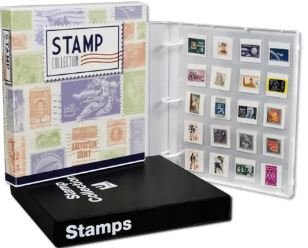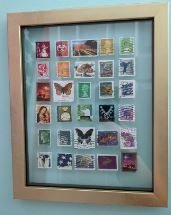Stamp collecting has been a popular hobby for generations, and many enthusiasts have fond memories of their first stamp albums, often shared with family members. But as with any hobby, stamp collecting as a family activity can be both a source of joy and a potential source of financial strain. So, is stamp collecting a family activity the perfect way to bond, or does it come with hidden costs that can make it more expensive than expected? Let’s explore the pros and cons of sharing this hobby with your loved ones.

The Joy of Stamp Collecting as a Family Activity
One of the main reasons stamp collecting as a family activity has endured for so long is its ability to bring family members together. Unlike many modern hobbies, stamp collecting offers a slower, more reflective experience that encourages interaction and conversation. Here’s why many families find it to be a rewarding activity:
1. Quality Time Together
Stamp collecting offers a wonderful opportunity for families to spend time together, away from the distractions of digital devices and busy schedules. Whether you’re sorting through old collections, discussing the history behind stamps, or trading duplicates, stamp collecting as a family activity creates a shared experience that strengthens family bonds. The process of learning together, and the excitement of finding a new addition to a collection, can be deeply fulfilling for everyone involved.
2. Educational Benefits
Stamp collecting as a family activity can be a great way to introduce children to history, geography, and culture. Each stamp has a story to tell, often reflecting the time, place, and values of the country it represents. For example, stamps can provide insights into famous historical figures, national landmarks, and even art movements. This makes the hobby both educational and fun, giving children the chance to learn about the world while also developing skills like organization, research, and attention to detail.
3. Encouraging Patience and Responsibility
Stamp collecting requires patience and discipline. Whether you’re searching for rare stamps or carefully organizing your collection, this hobby teaches valuable life skills. Children learn to take care of their possessions and understand the importance of careful planning and organization. For parents, stamp collecting as a family activity can serve as a tool to teach these essential qualities in a low-pressure, enjoyable setting.
4. Building a Shared Passion
One of the greatest joys of stamp collecting as a family activity is the potential to develop a shared passion. Collecting together helps create a sense of camaraderie and shared purpose. As you work together to complete a collection, the experience becomes something you all look forward to. It’s an activity that can grow with your family, evolving as children grow older and gain a deeper appreciation for the hobby.

The Potential Downsides of Stamp Collecting as a Family Activity
While stamp collecting as a family activity offers many benefits, it’s important to consider the potential downsides that might make this hobby more challenging or even expensive. For some families, the costs associated with stamp collecting can add up, and the hobby may not be as enjoyable as it first appears. Here are some potential challenges:
1. Cost of Collecting Rare Stamps
Stamp collecting can be an expensive hobby, particularly when families become interested in collecting rare, vintage, or specialized stamps. Rare stamps, limited edition releases, and stamps with historical significance can often carry hefty price tags. If stamp collecting as a family activity becomes focused on acquiring valuable stamps, it’s easy for costs to spiral. Parents may not always anticipate the financial commitment involved in purchasing higher-end stamps, especially as children become more invested in finding unique items to add to their collections.
2. Ongoing Expenses for Supplies
Maintaining a stamp collection requires more than just buying the stamps themselves. To preserve the integrity of your collection, you’ll need various supplies such as albums, storage systems, magnifying glasses, tweezers, and stamp hinges. These items can add up over time, making stamp collecting as a family activity potentially more expensive than anticipated. Some families may not realize how much these ongoing costs can affect their budget, especially if they choose to invest in high-quality materials.
3. Time Commitment
While stamp collecting as a family activity can be a bonding experience, it’s not always an activity that can be done quickly. Sorting, organizing, and categorizing stamps can take a significant amount of time, which might not always fit into a busy family schedule. For some families, the time commitment may feel like a burden, especially when other activities compete for attention. It’s important to consider whether the time spent on stamp collecting as a family activity is truly enjoyable for everyone involved.
4. Risk of Collecting for Collecting’s Sake
Sometimes, as a family becomes more immersed in stamp collecting as a family activity, it can shift from a fun hobby to an obsessive pursuit. This can lead to over-collecting — purchasing stamps just for the sake of completing a set or satisfying a desire for quantity rather than quality. The excitement of finding new stamps can sometimes overshadow the true enjoyment of the hobby, making it more of a financial investment than a source of personal fulfillment. Families might feel pressured to keep up with the latest trends in stamp collecting, even if the enjoyment of the activity begins to wane.

Balancing the Fun and the Expense: Tips for Families
To make sure that stamp collecting as a family activity remains enjoyable without becoming too expensive, it’s important to find a balance. Here are some tips for keeping the hobby fun and affordable:
1. Set a Budget
Before diving too deeply into stamp collecting as a family activity, set a clear budget. This can help ensure that the hobby remains affordable and doesn’t strain your finances. Make it a point to shop around for stamps, both online and at local stamp shows, to get the best deals. Many families also choose to focus on less expensive, but still meaningful, stamps from specific regions or periods, which can provide a fun challenge without breaking the bank.
2. Start Small
Rather than immediately diving into collecting rare or valuable stamps, begin with more common or inexpensive stamps. This will allow your family to get a feel for the hobby without committing large amounts of money. Starting small also provides a chance to explore various themes or types of stamps, which can help spark a deeper interest in the hobby over time.
3. Use Free or Low-Cost Resources
There are many free and low-cost resources available to help families get started with stamp collecting. Many public libraries offer free access to stamp-collecting books and guides. Online forums and communities can also be a great way to connect with other collectors, share tips, and trade stamps without spending a fortune.
4. Make it a Fun, Educational Activity
Rather than focusing solely on the financial side of collecting, try to emphasize the educational and bonding aspects of the hobby. Explore the history behind stamps, learn about different countries and cultures, and enjoy the process of discovering something new together as a family. By keeping the focus on fun and education, stamp collecting as a family activity can remain a fulfilling experience without turning into a financial burden.

Navigating stamp auctions can be a dream come true for those who have a deep understanding of philately and the market. Auctions provide access to rare stamps, limited editions, and even collections that might never be offered through traditional retail channels. In this sense, stamp auctions are an essential part of the philatelic world.
Conclusion
Ultimately, stamp collecting as a family activity can be both a rewarding bonding experience and a potentially expensive hobby. For families who approach it with a clear understanding of both the joys and the costs involved, it can be a fulfilling way to spend time together while learning about history and culture. However, if not managed carefully, it can also become a costly pursuit that places undue financial pressure on the family. By setting a budget, starting small, and keeping the focus on education and enjoyment, families can ensure that stamp collecting remains a fun, affordable activity for everyone involved.



